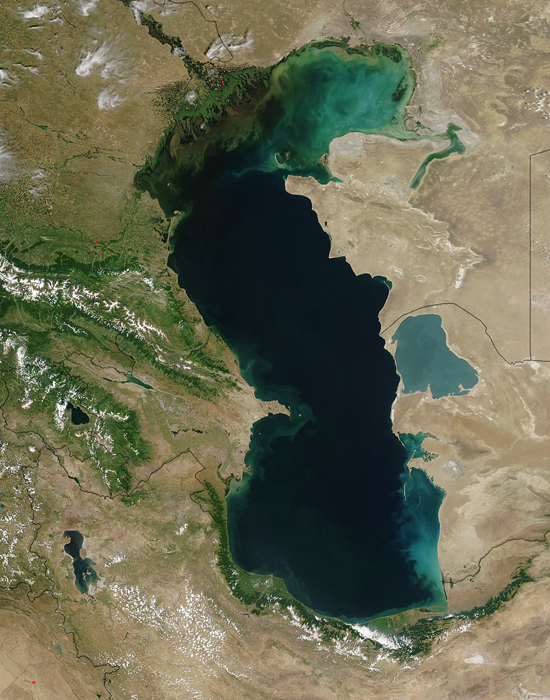

Caspian Sea | Satellite: Aqua 1km | 500m | 250m Swirling clouds of sediment and phytoplankton float in the waters of the Caspian Sea, as shown in this true-color Aqua MODIS image acquired June 11, 2005. Sometimes called the world's largest lake, the Caspian is technically an inland saltwater sea. Regardless, it is still the world's largest inland body of water. It has no natural outflows other than evaporation, and discharged water by the Ural and Volga rivers has caused the sea's levels to rise and fall independently of the rest of the world's oceans and other water bodies. The Caspian is renowned for rich natural resources, namely sturgeon, oil, and natural gas. Because five nations share its waters - Russia, Azerbaijan, Iran, Turkmenistan, and Kazakhstan - the competition for these resources is fierce. Not all of the nations agree on how the sea's oil and gas resources should be collected and distributed, and the sturgeon population has been over-fished to the point where environmentalists are calling for a moratorium until the population recovers. Satellite: Aqua Image courtesy Jeff Schmaltz, MODIS Land Rapid Response Team, NASA Goddard Space Flight Center. All images are public domain.  Front Page Front Page |